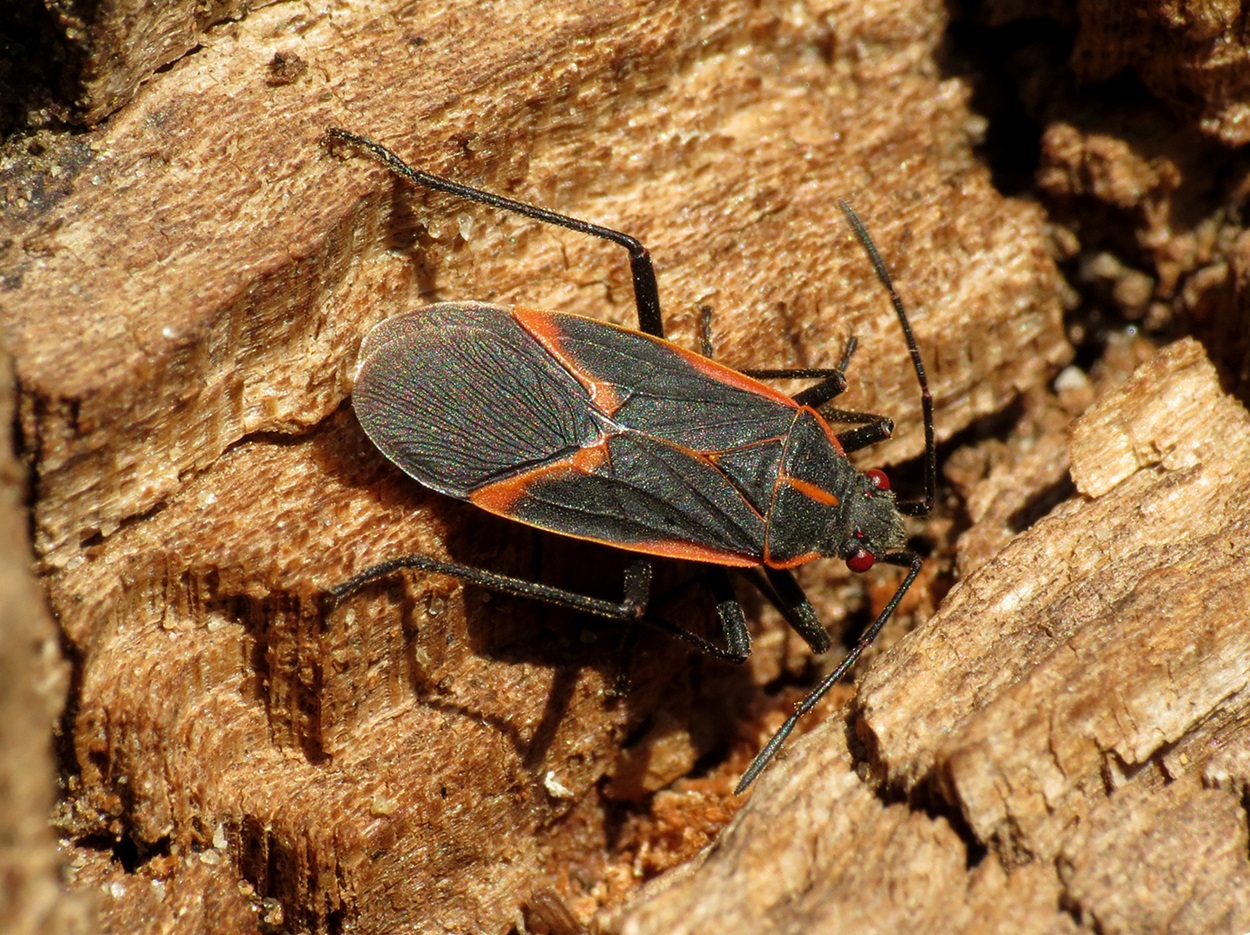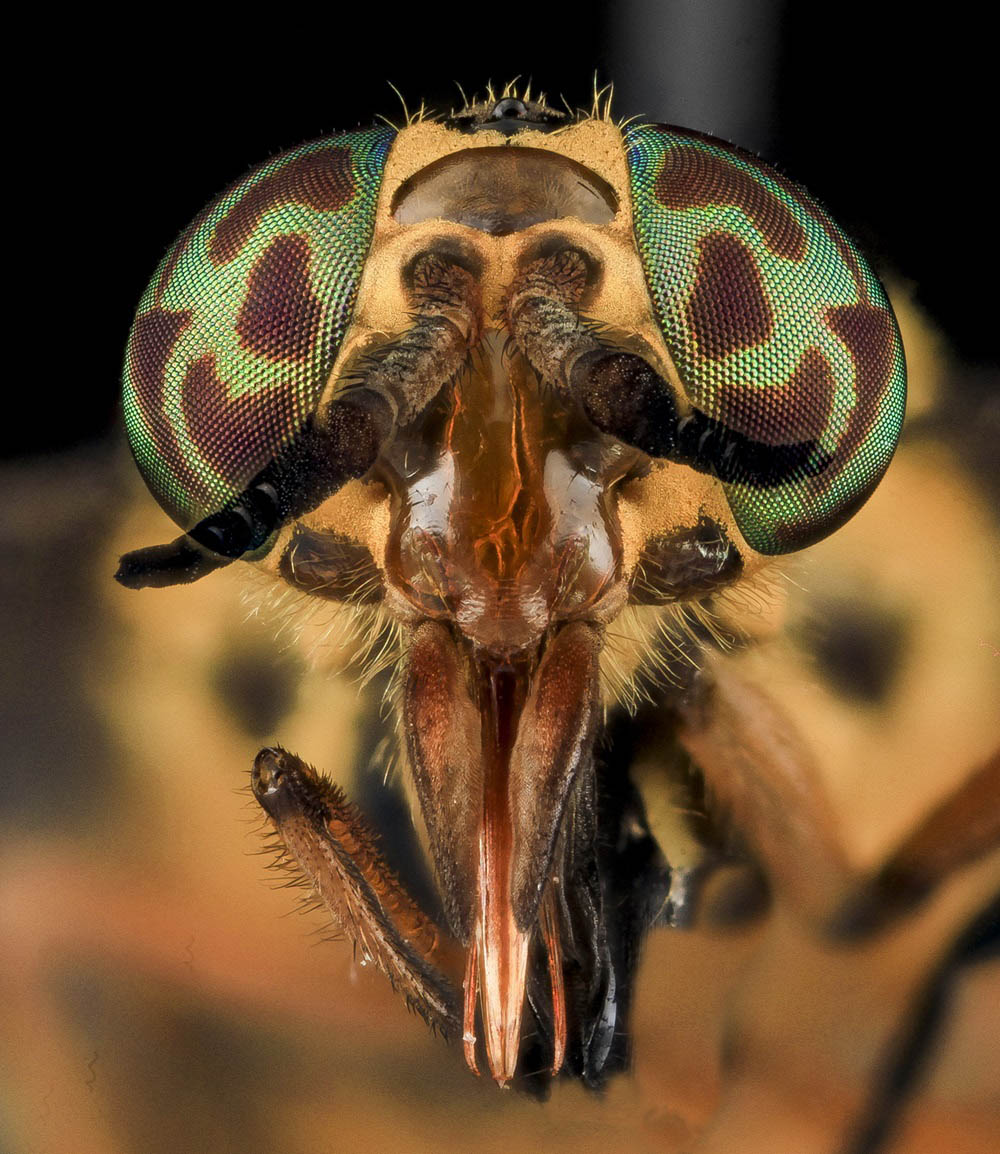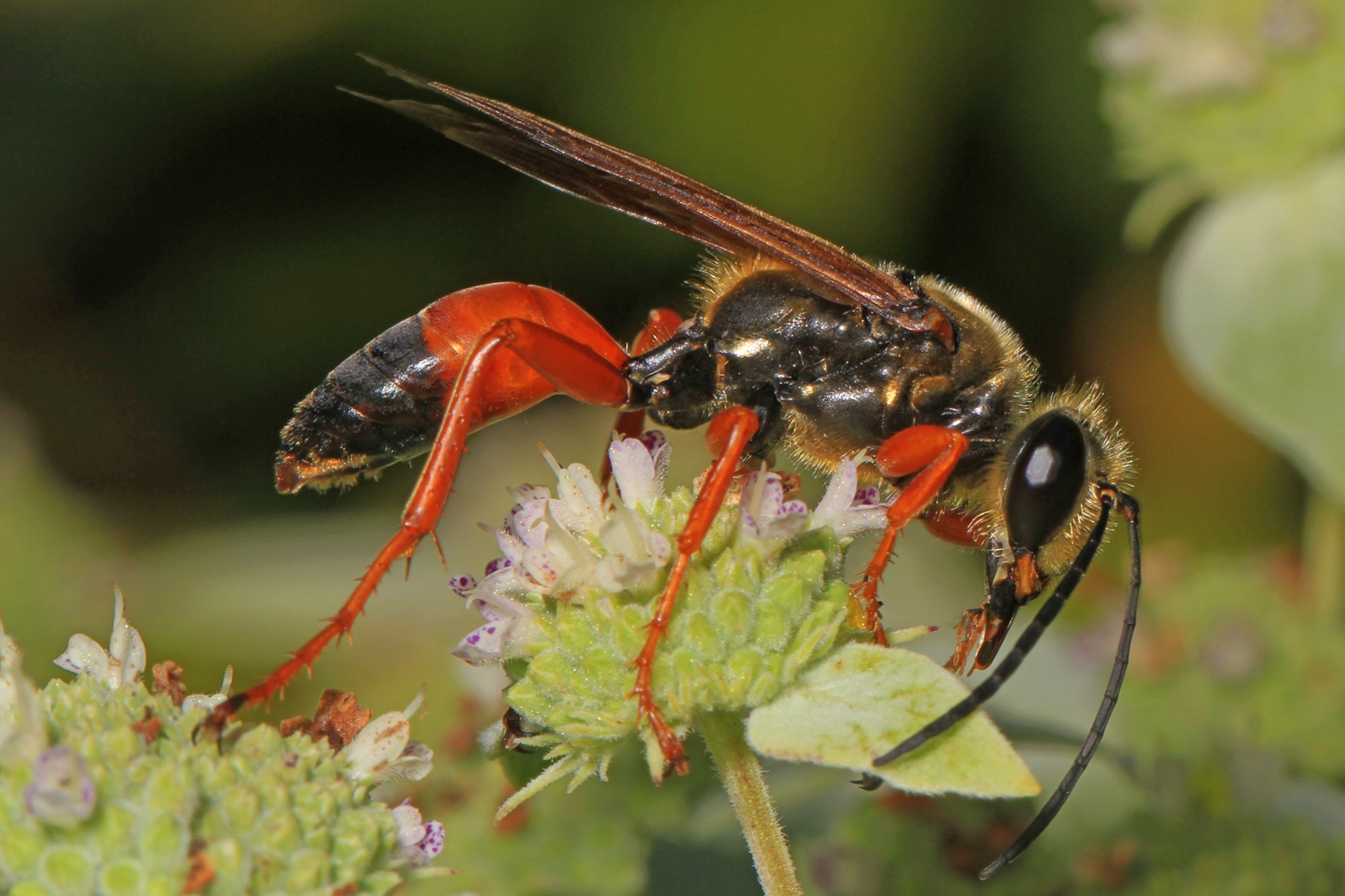The Northern walkingstick (Diapheromera femorata) is Canada’s only native species of stick insect. Stick insects belong to the order Phasmida, a group known for their remarkable camouflage making them resemble twigs, bark and leaves. There are over 3,000 species of phasmid worldwide, most of which live in tropical and sub-tropical regions.
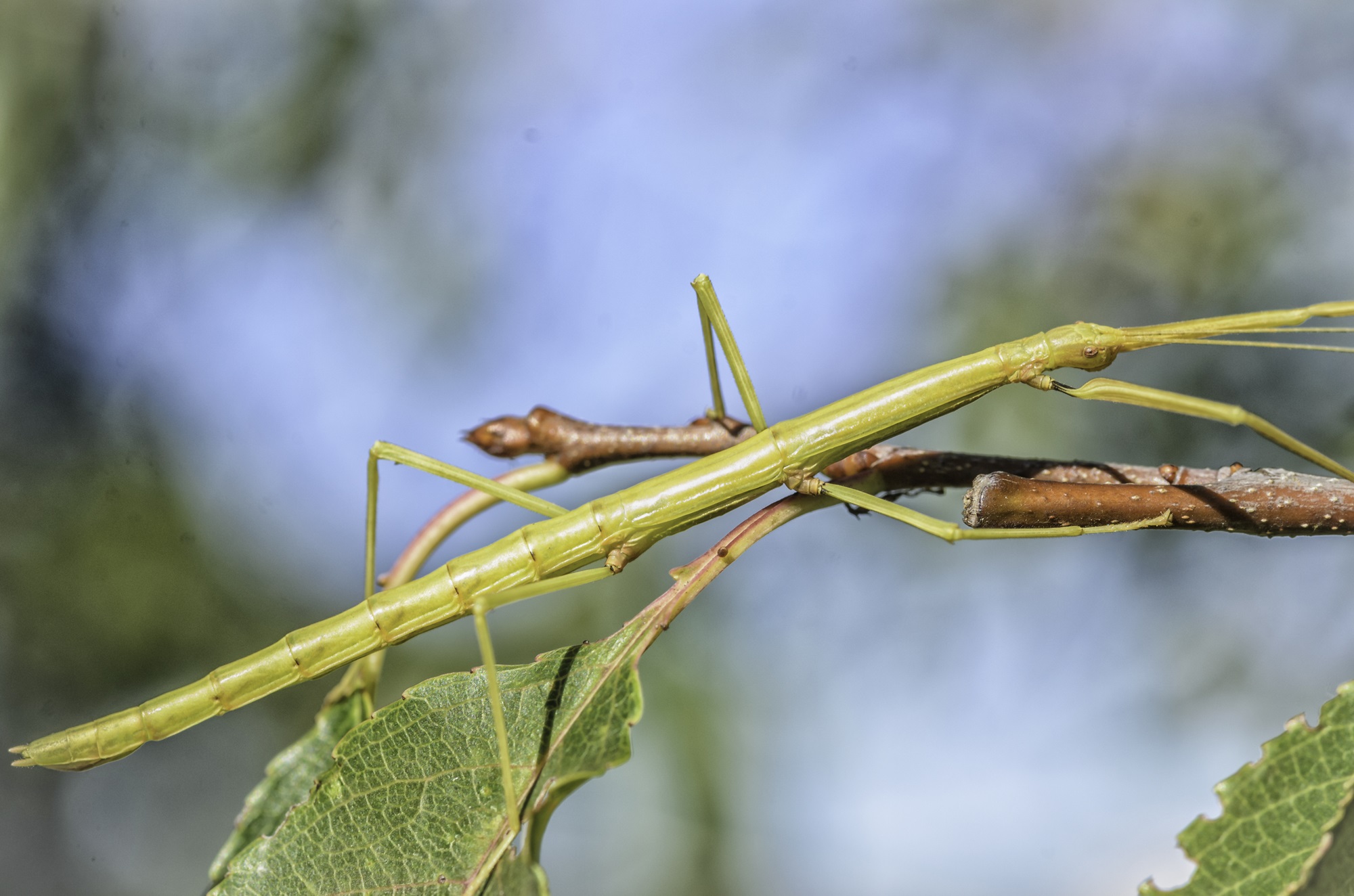
Description
Northern walkingsticks are slender, brown or green insects with long, cylindrical bodies that resemble twigs. Their colouring can be mottled, with combinations of green, brown, grey or red that help them blend into their environment. Both males and females are wingless and have long antennae, measuring about two-thirds the length of their body.
Females are typically larger than males. On average, females reach 9.5 cm while males are about 7.5 cm long. Both sexes have a femoral spine, or a sharp spike on their hind legs, but they are much larger in males.
Immature walkingsticks, or nymphs, look like smaller versions of adults. They are pale green when they first hatch and darken as they grow, moulting four to six times before reaching adulthood. Northern walkingstick eggs are oval and resemble little seeds. They are glossy black on one side and light tan on the other, with a small round cap on one end called an operculum, through which the nymph emerges.
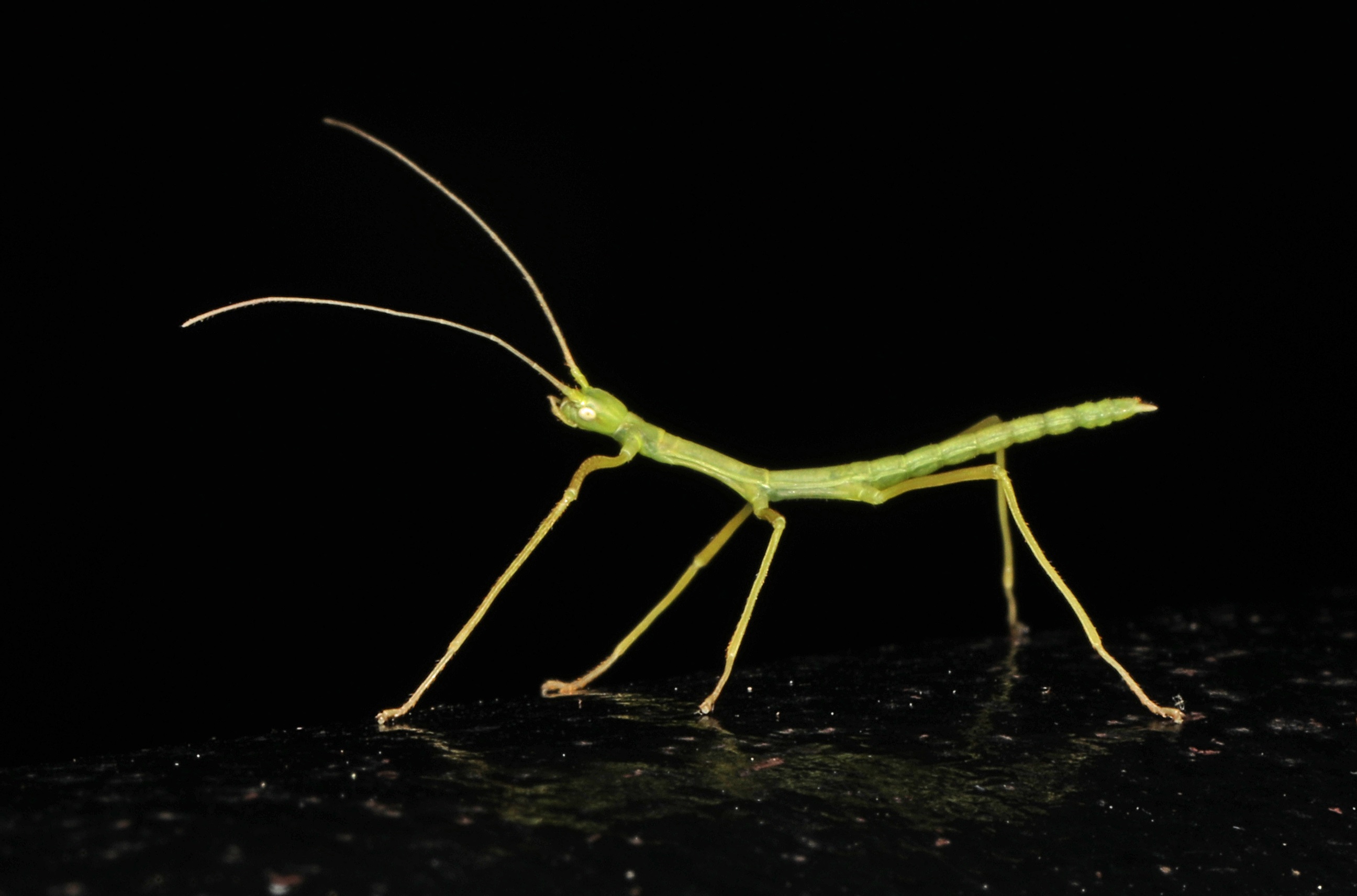
Distribution and Habitat
In Canada, Northern walkingsticks live primarily in deciduous forests across southern Ontario and Quebec. These insects are most commonly found in the canopy of hardwood trees, especially oaks, though they are known to feed on a variety of species, including cherry, hazelnut, blueberry and black locust.
Northern walkingsticks are nocturnal and usually remain hidden during the day. At night, they become active and feed.
Fossils show that stick insects have a long history in North America. Early relatives to modern phasmids lived in what is now Canada over 50 million years ago. Fossils have been found in Alberta and British Columbia, including well-preserved specimens from the early Eocene epoch (see Geological History of Canada).
Reproduction and Development
Northern walkingsticks complete one generation a year, overwintering as eggs and hatching in mid- to late-spring. Once hatched, nymphs will typically moult five times before reaching maturity, though some males may only require four moults, and some females may require as many as six.
Mating occurs shortly after adults emerge, in late July to early August. Females typically begin laying eggs in September, often dropping them directly onto the forest floor. In areas with large populations, this can create a sound described as similar to rain as eggs fall from the trees. Each female can lay up to 150 eggs, depositing about three per day.
The eggs of many phasmid species, including D. femorata, have a fleshy cap called a capitulum. In other phasmid species, this structure is known to attract ants, which carry the eggs into their nests. The ants eat the capitulum and discard the egg in a safe place, helping to protect it from predators. While this behaviour has not yet been confirmed in Northern walkingsticks, the presence of a capitulum suggests that similar interactions may occur.
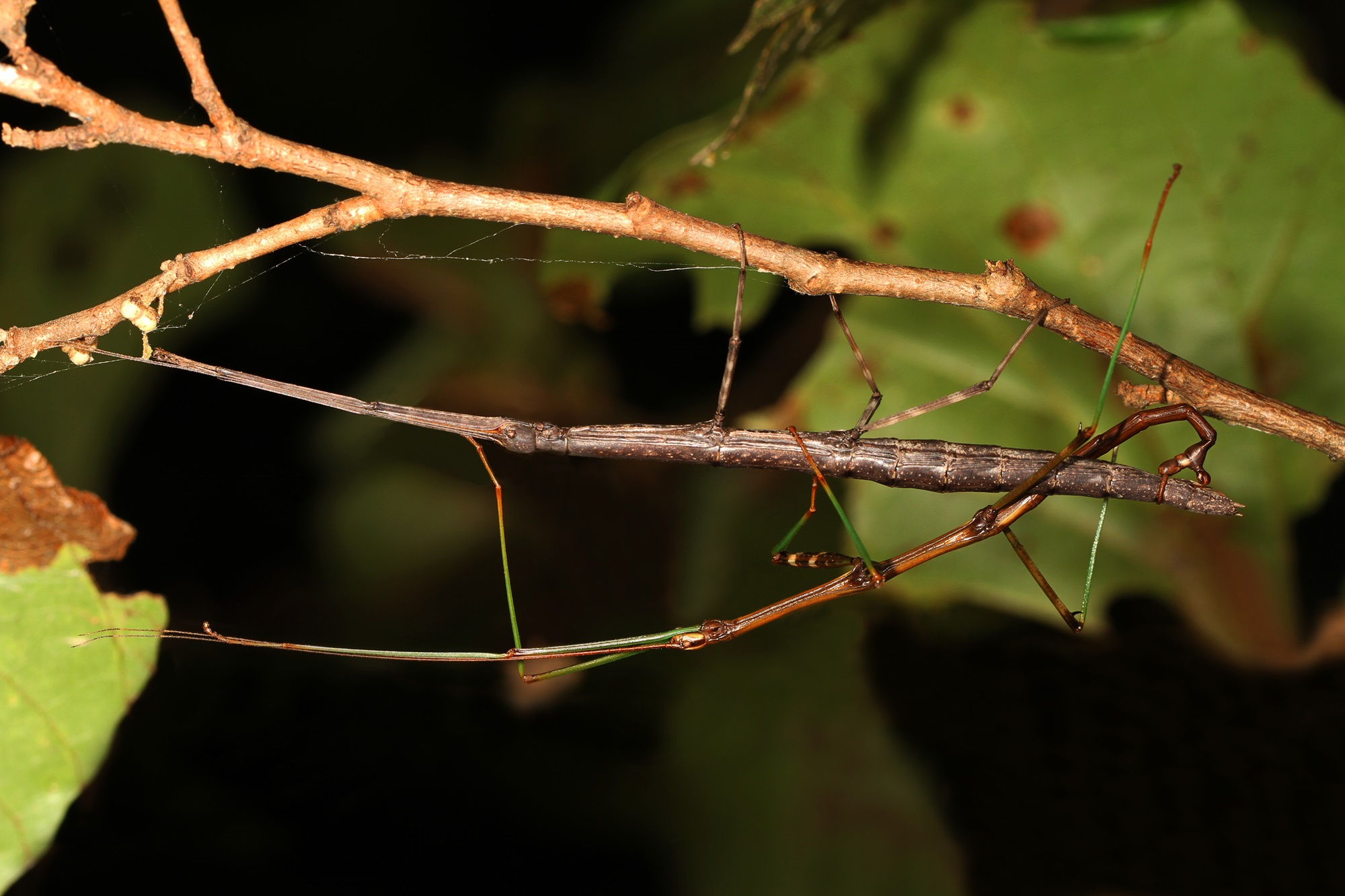
Diet and Predators
Northern walkingsticks are herbivores. Newly hatched nymphs feed on low-growing plants, such as witch hazel and sweet fern. As they mature, they move higher into the trees and consume the leaves of oak, cherry and other hardwoods.
Feeding is mainly nocturnal to avoid daytime predators. Their main antipredator defence is camouflage. In addition to physically resembling sticks, they will also attempt to mimic sticks behaviourally. They do this by holding their legs rigidly forward and swaying slowly back and forth to mimic a twig in the breeze. If they are disturbed, they may drop suddenly from a branch, falling to the forest floor to blend in with the leaf litter.
Many species of birds will feed on Northern walkingsticks, as well as predatory invertebrates.
Ecological Importance
When abundant, Northern walkingsticks can defoliate large areas of forests, though they are not considered a significant forest pest in Canada (see Four Major Insect Pests of Forests in Canada). The process of defoliation can also have some benefits to a healthy forest ecosystem, helping to create and maintain complex forest habitats that support a variety of species. Walkingsticks also serve as prey for many forest animals.
Conservation
The Northern walkingstick has not been formally assessed for conservation status in Canada, but is generally considered secure. Although rarely seen, this is likely due to its excellent camouflage and canopy-dwelling habits rather than low population numbers. However, habitat loss from deforestation and urban development could threaten local populations, particularly in fragmented forests.
Strict regulations prohibit the import and release of non-native stick insect species in Canada, as they are considered potential plant pests.

 Share on Facebook
Share on Facebook Share on X
Share on X Share by Email
Share by Email Share on Google Classroom
Share on Google Classroom

